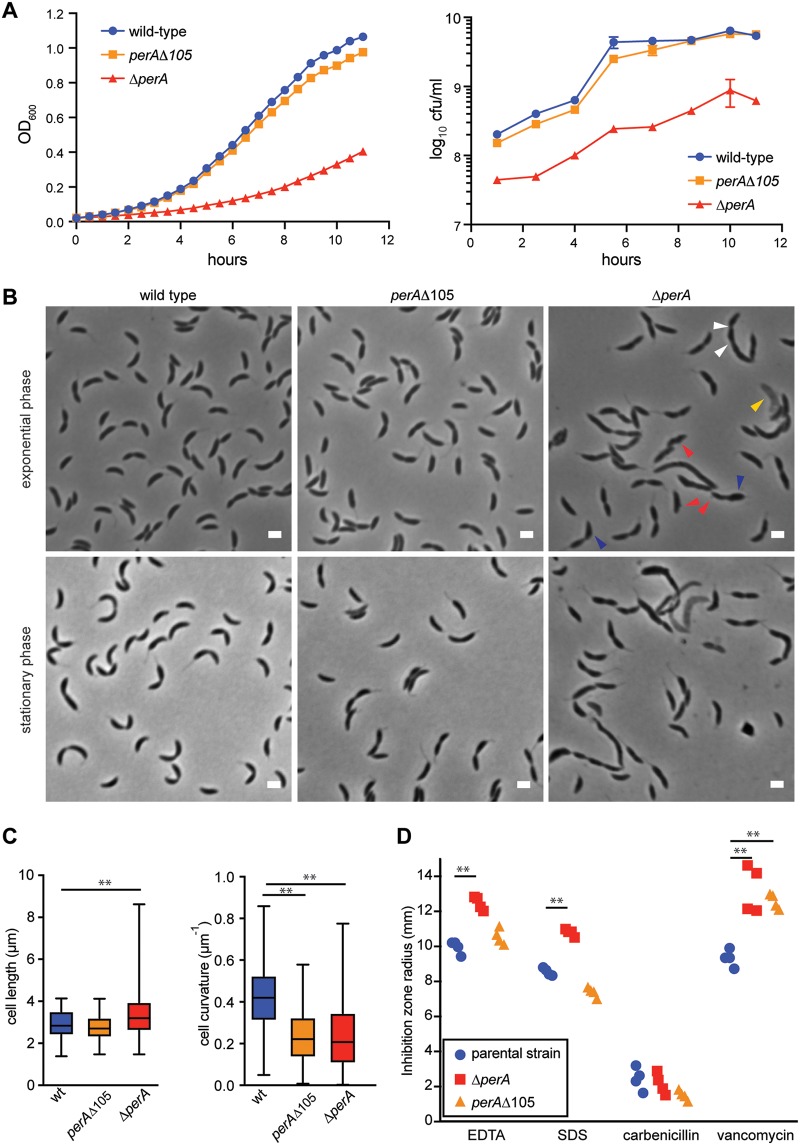FIG 7.
PerA is required for cell-envelope homeostasis and may serve as a Cdz toxin receptor. (A) Growth curves (left) and CFU curves (right) of the indicated strains in rich medium. Data points represent the means of three independent cultures; error bars indicate standard deviations. (B) Phase micrographs of the indicated strains in exponential (OD600 = 0.25) and stationary (OD600 ∼ 0.9 to 1) phases. For the ΔcdzCDI ΔperA image, red arrowheads point at membrane blebs, blue arrowheads indicate cells with increased cell width, white arrowheads show pinching sites in a filamentous cell, and yellow arrowheads indicate “ghosts” of lysed cells. (C) Quantification of cell morphology for the strains shown, in stationary phase. A minimum of 500 cells and three frames were quantified. Scale bars, 2 μm. (D) Susceptibilities of the perA mutants to cell envelope stressors: radius of inhibition around a disk impregnated with 10 μl of the indicated substance (1 M EDTA, 10% SDS, 50 mg/ml carbenicillin, 100 mg/ml vancomycin) and placed on a lawn of the indicated strain on soft agar. Data from each of four replicates are shown. **, P < 0.005 (multiple-comparison ANOVA).

